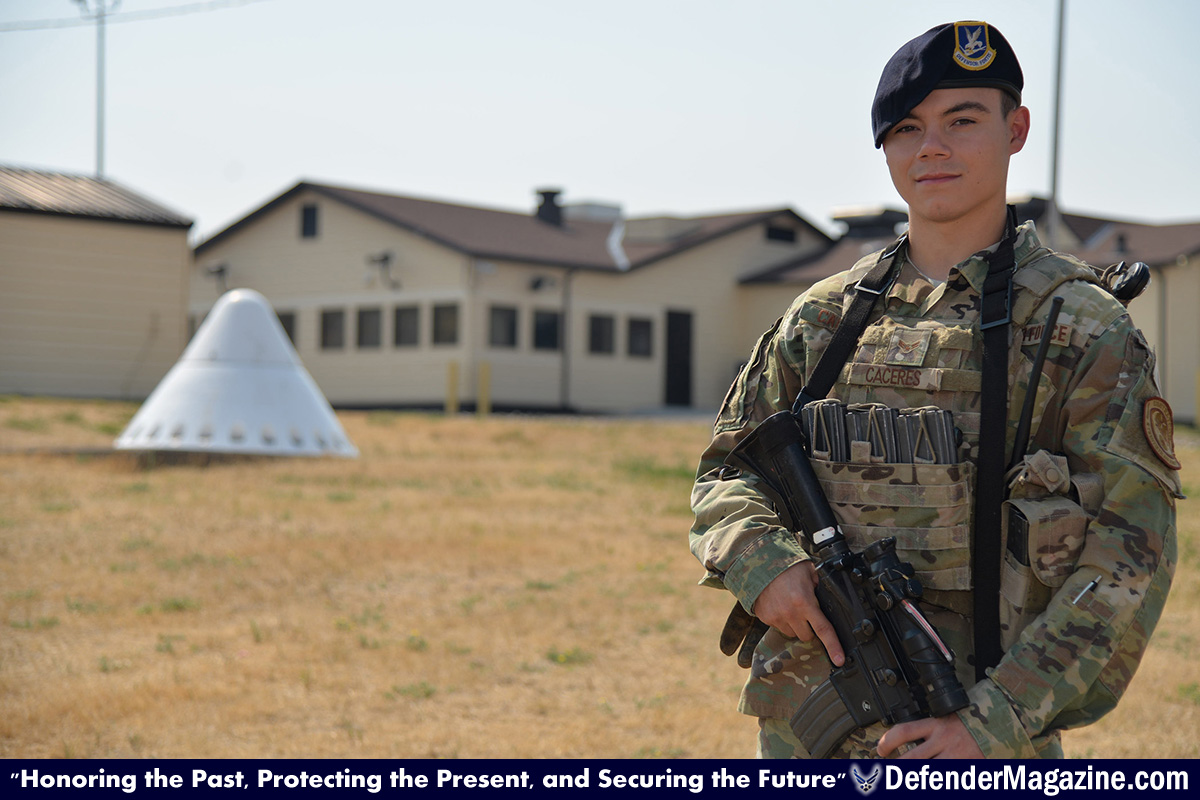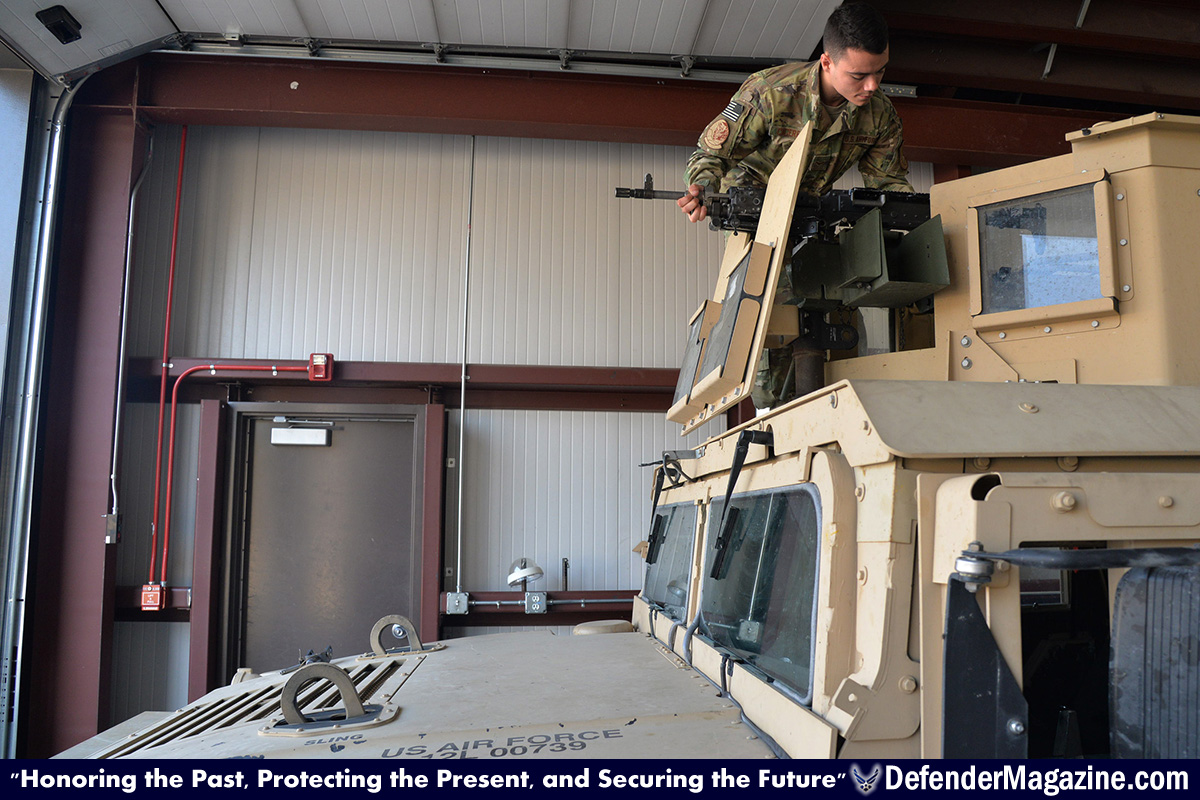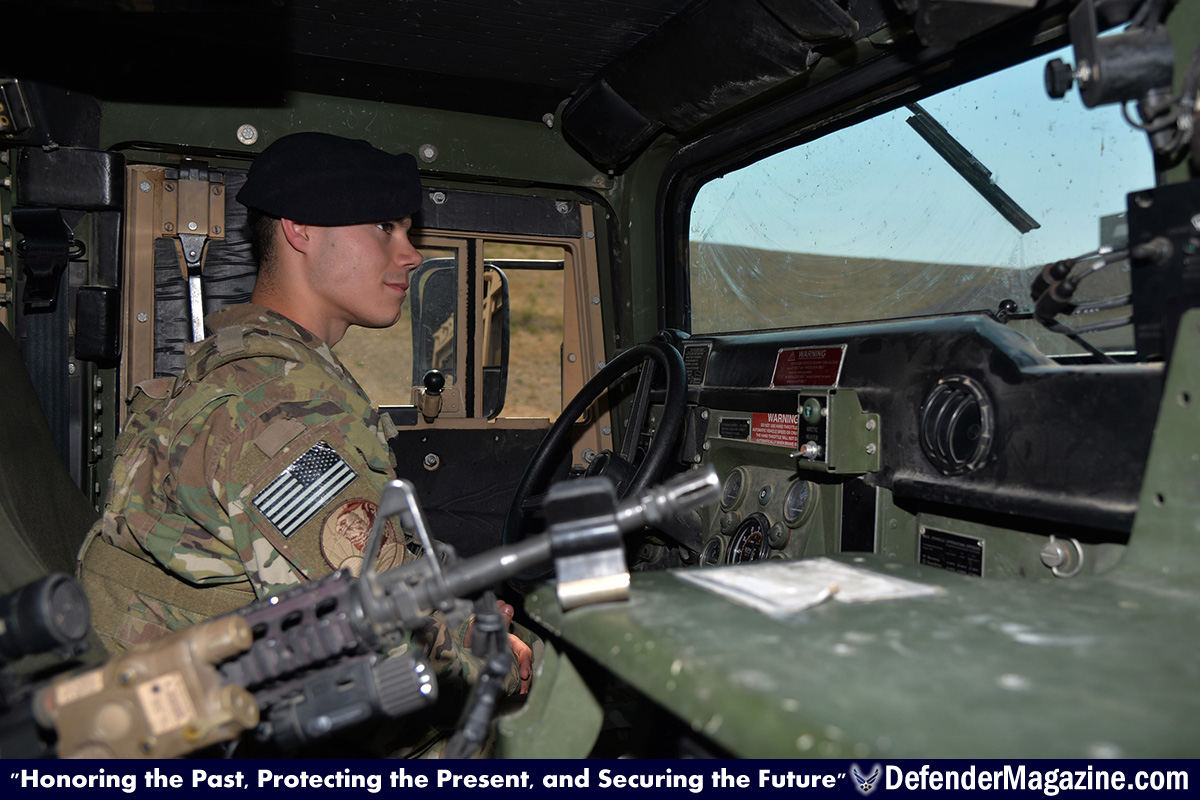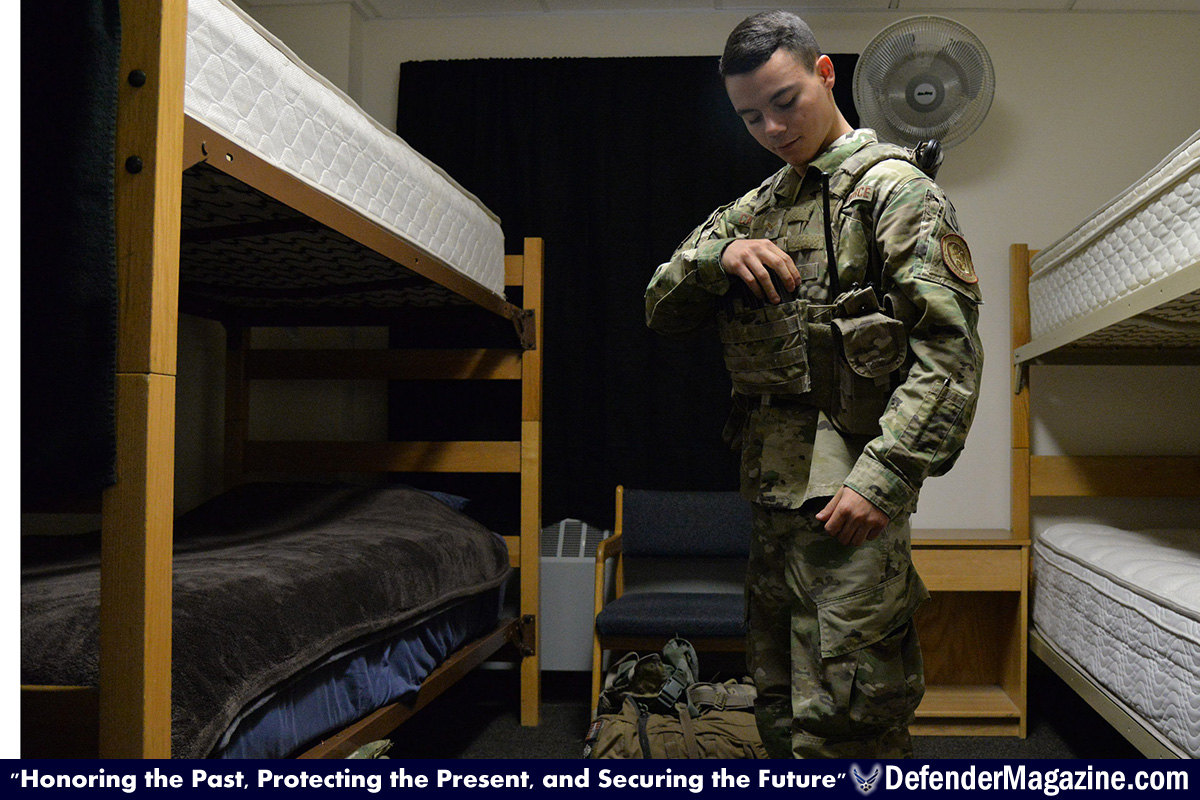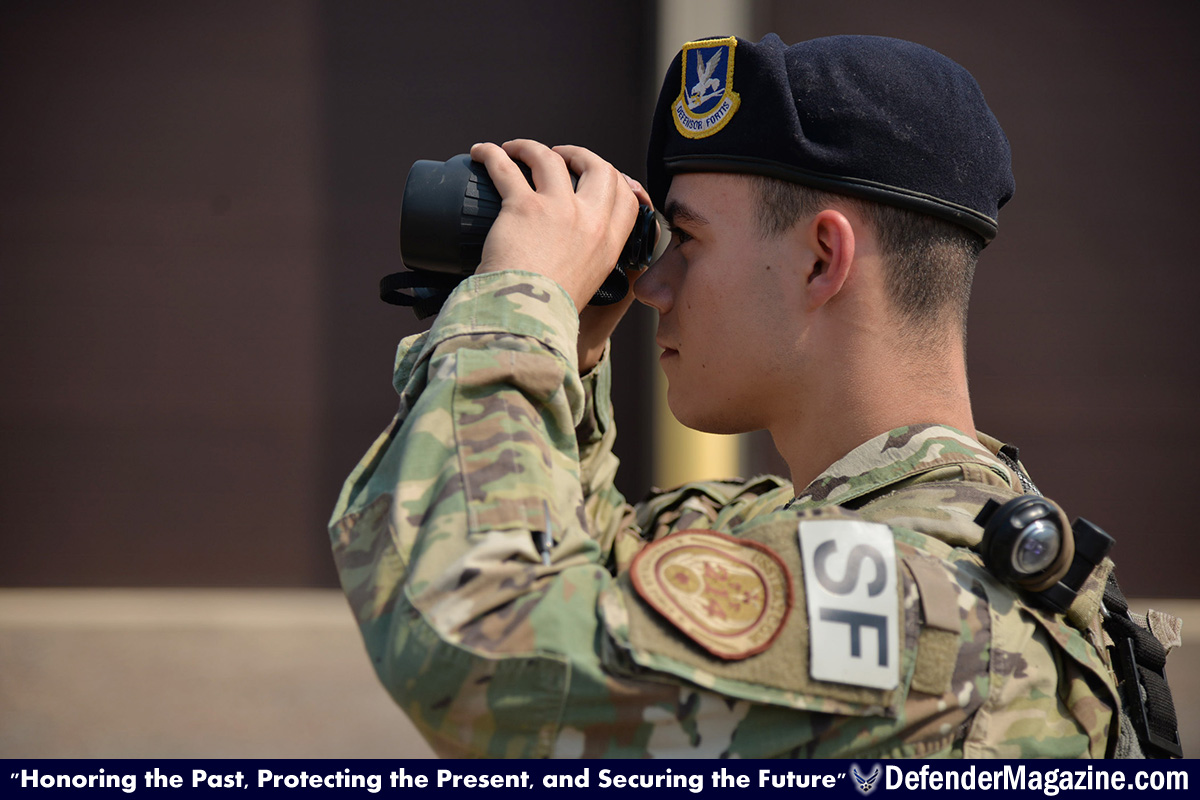
08/31/2017 MALMSTROM AIR FORCE BASE, Mont. —
Spread out over 13,800 square-miles in northcentral Montana lie 15 missile alert facilities, structures that house missileers, chefs, facility managers and security forces Airmen who operate, secure and defend 150 of the nation’s intercontinental ballistic missiles.
Airman 1st Class Dillan Caceres, 341st Missile Security Forces Squadron response force leader, is one of the Airmen whose duty takes him to the MAFs, to live for days at a time, sworn to protect some of America’s most valuable assets, to deter adversaries and allow the United States and its allies to sleep peacefully at night.
Caceres said his job is simple – to be the first line of defense in the missile complex.
“My job is to deny unauthorized access to missile alert facilities and launch facilities, and to defend our assets,” Caceres said.
Caceres’ first day of his tour in the missile field begins around 5:45 a.m. at the base where he and other security forces Airmen check out vehicles for their drive out to the MAF. They inspect all of the vehicles ensuring they are good to go, and account for all ammunition and weapons that will go on the journey with them.
The closest MAF to Malmstrom is approximately 30 minutes away from base, while the furthest is nearly three hours. Today, Caceres and his team will make the shorter drive and arrive to the MAF where they will be processed in through the barbed-wire fences.
Once inside, the defenders unload their equipment for their stay at the MAF and proceed to changeover with other security forces Airmen. During changeover, the new team receives a shift-change briefing, relieves the previous team of defenders and begins their shift.
“During our shift, we will perform perimeter checks along the fence line to make sure the fence is intact and that the warning signs around the area are visible,” Caceres said. “We will also respond to alerts at launch facilities to ensure the locations are safe and secure.”
Launch facilities are the locations where the ICBMs rest in the ground.
Other duties include checking vegetation around the LFs to prevent false alarms and security concerns, verifying MAF and LF site lighting is operable and all alarms are working properly.
“I like to be busy,” Caceres said. “It makes me feel like I am contributing and preventing any incidents from occurring.”
Staff Sgt. Michael Taku, 341st MSFS flight security controller, works as a gatekeeper at the MAF. He provides command and control in alarm and duress situations and also secures the MAF. He is the last line of defense for the missileers and coordinates with other agencies to ensure 24/7 security to the nation’s assets.
Through the sometimes 14, 16 or more hour days, he said their long duty days do not go wasted.
“We work long hours in rain, hail and snow in the largest missile complex and we don’t do this job for the fame or glory,” Taku said. “We do this because without our constant presence out here in the missile field, we leave our families, allies and nation vulnerable.
“These are troubled and unpredictable times at home and around the world, but the one thing that is certain is nuclear security remains as strong as ever.”
By Airman 1st Class Daniel Brosam, 341st Missile Wing Public Affairs / Published August 31, 2017
Airman 1st Class Dillan Caceres, 341st Missile Security Forces Squadron response force leader, stands in front of a missile alert facility Aug. 28, 2017, near Belt, Mont. Caceres’ job is to deny unauthorized access to missile alert facilities and launch facilities, and to defend the nation’s nuclear assets. (U.S. Air Force photo/Airman 1st Class Daniel Brosam)
Airman 1st Class Dillan Caceres, 341st Missile Security Forces Squadron response force leader, performs a random antiterrorism measure at a missile alert facility Aug. 28, 2017, near Belt, Mont. RAMs help provide additional security to MAFs and launch facilities. (U.S. Air Force photo/Airman 1st Class Daniel Brosam)
Airman 1st Class Dillan Caceres, 341st Missile Security Forces Squadron response force leader, places a weapon on a Humvee Aug. 28, 2017, near Belt, Mont. Caceres and his team respond to alerts at launch facilities, locations where intercontinental ballistic missiles rest in the ground, to ensure the locations are safe and secure. (U.S. Air Force photo/Airman 1st Class Daniel Brosam)
Airman 1st Class Dillan Caceres, 341st Missile Security Forces Squadron response force leader, sits in a Humvee at a missile alert facility Aug. 28, 2017, near Belt, Mont. Security forces Airmen drive millions of miles each year to, from and around the missile complex. The closest MAF is approximately 30 minutes away from base while the furthest is nearly three hours. (U.S. Air Force photo/Airman 1st Class Daniel Brosam)
Airman Kaiulani Vila and Staff Sgt. Marco Castillo, 341st Missile Security Forces Squadron response force members, perform a perimeter check around a missile alert facility Aug. 28, 2017, near Belt, Mont. Perimeter checks along the fence line ensure the fence is secure and the warning signs around the area are visible. (U.S. Air Force photo/Airman 1st Class Daniel Brosam)
Airman 1st Class Dillan Caceres, 341st Missile Security Forces Squadron response force leader, dons his gear at a missile alert facility Aug. 28, 2017, near Belt, Mont. Caceres lives at a MAF for days at a time while performing his security duties. (U.S. Air Force photo/Airman 1st Class Daniel Brosam)
